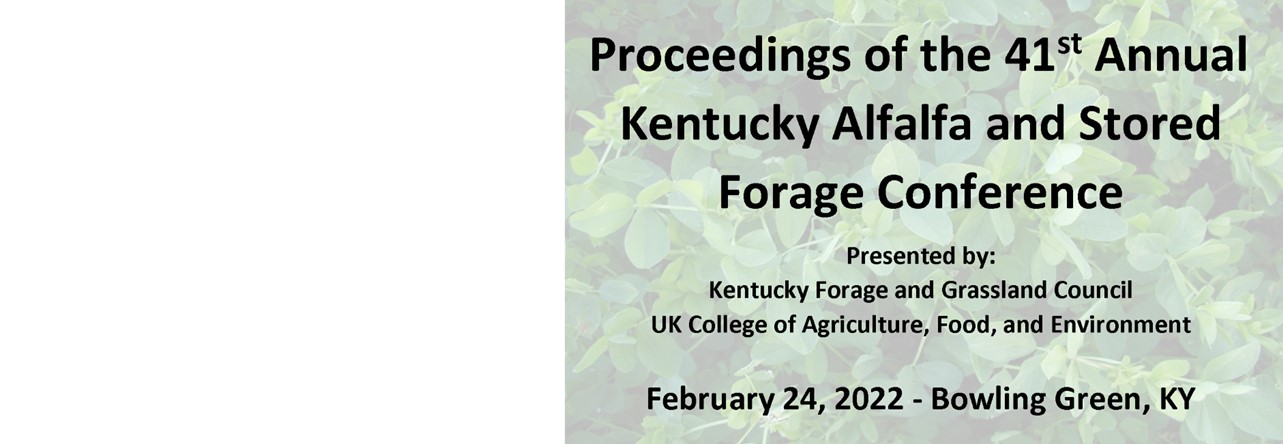Start Date
2-24-2022 1:00 PM
Description
The ability to make silage in round bale packages allows producers to avoid rain damage and produce high quality stored forage. The proliferation of bale wrappers (both individual and inline types) has made this technology more available to producers. Although the process for making baleage is well documented, producers have experienced poor fermentation and in some cases botulism toxicity from baleage. The parameters of good silage are well known and include pH below 5.0 and lactic acid concentrations above 3% on a DM basis. However, tests of farmer produced baleage reveals that often these target values are not achieved. To better understand the fermentation characteristics of Kentucky baleage, a survey was conducted of round bale silage samples from several Kentucky counties in 2017, 2018 and 2019. Moisture content (MC) at baling was the greatest determinant of fermentation success as measured by pH and lactic acid concentration. Moisture contents were highly variable, with more outside the recommended range of MC (40 to 60%) than within. Farmer practices including wilting time and equipment used were recorded for the 2019 samples. All of the well‐accepted practices for making baleage were confirmed in this survey (cutting on time, wilting to proper MC, dense bales, achieving and maintaining anaerobic storage conditions). Baleage samples exceeding 65% MC had elevated butyric acid concentrations, indicating secondary fermentation by clostridial bacteria.
Included in
Round Bale Silage – Farmer Results in Kentucky
The ability to make silage in round bale packages allows producers to avoid rain damage and produce high quality stored forage. The proliferation of bale wrappers (both individual and inline types) has made this technology more available to producers. Although the process for making baleage is well documented, producers have experienced poor fermentation and in some cases botulism toxicity from baleage. The parameters of good silage are well known and include pH below 5.0 and lactic acid concentrations above 3% on a DM basis. However, tests of farmer produced baleage reveals that often these target values are not achieved. To better understand the fermentation characteristics of Kentucky baleage, a survey was conducted of round bale silage samples from several Kentucky counties in 2017, 2018 and 2019. Moisture content (MC) at baling was the greatest determinant of fermentation success as measured by pH and lactic acid concentration. Moisture contents were highly variable, with more outside the recommended range of MC (40 to 60%) than within. Farmer practices including wilting time and equipment used were recorded for the 2019 samples. All of the well‐accepted practices for making baleage were confirmed in this survey (cutting on time, wilting to proper MC, dense bales, achieving and maintaining anaerobic storage conditions). Baleage samples exceeding 65% MC had elevated butyric acid concentrations, indicating secondary fermentation by clostridial bacteria.

